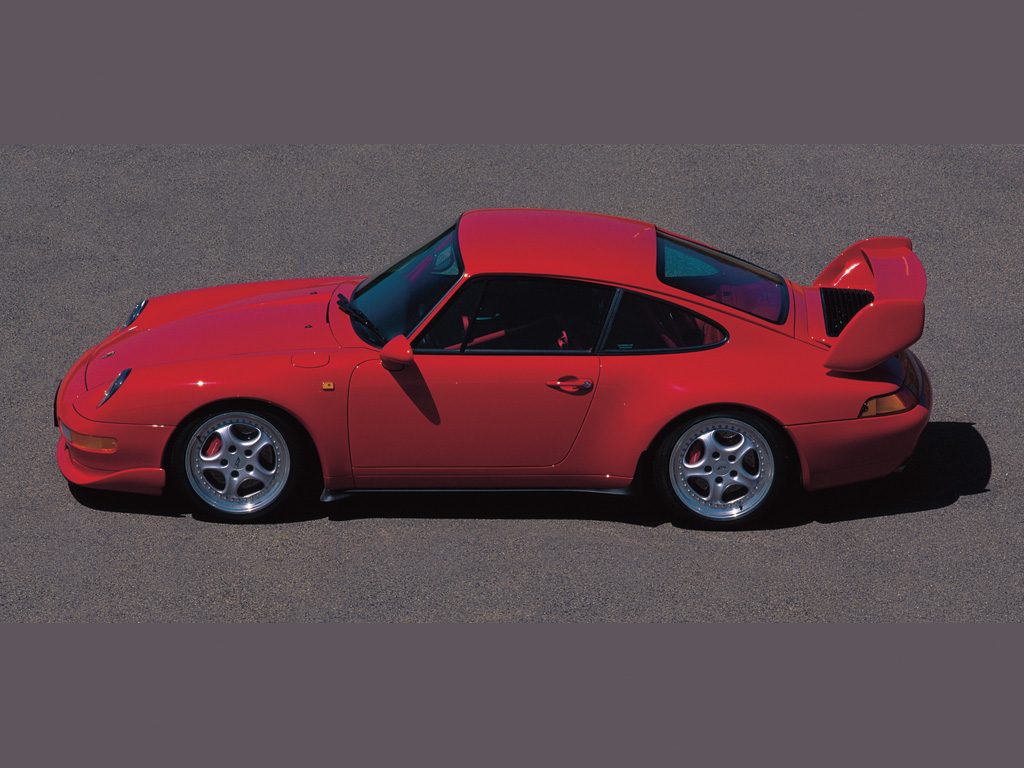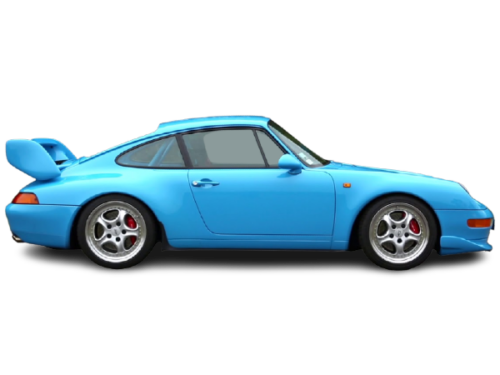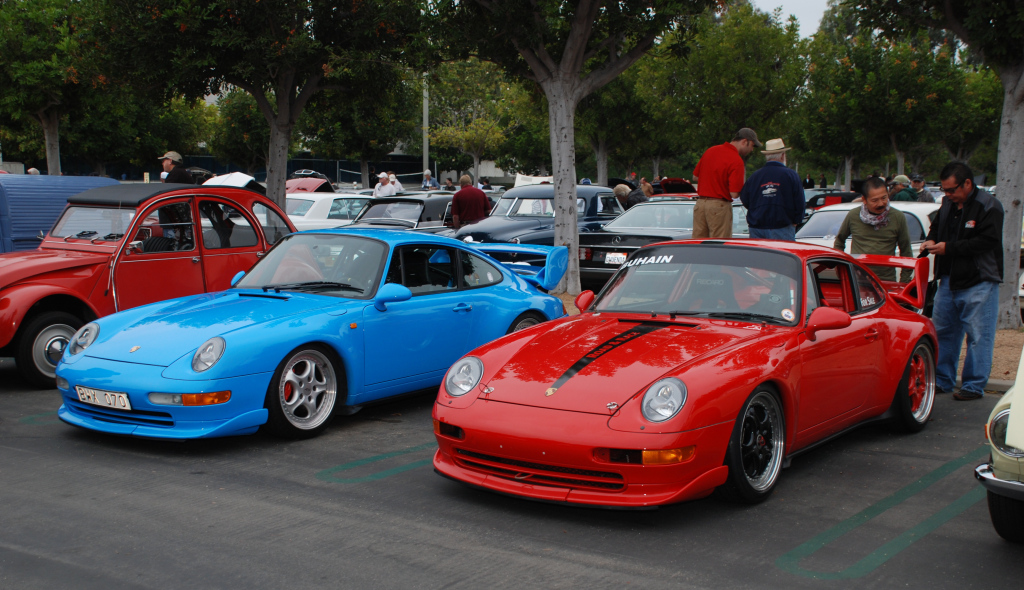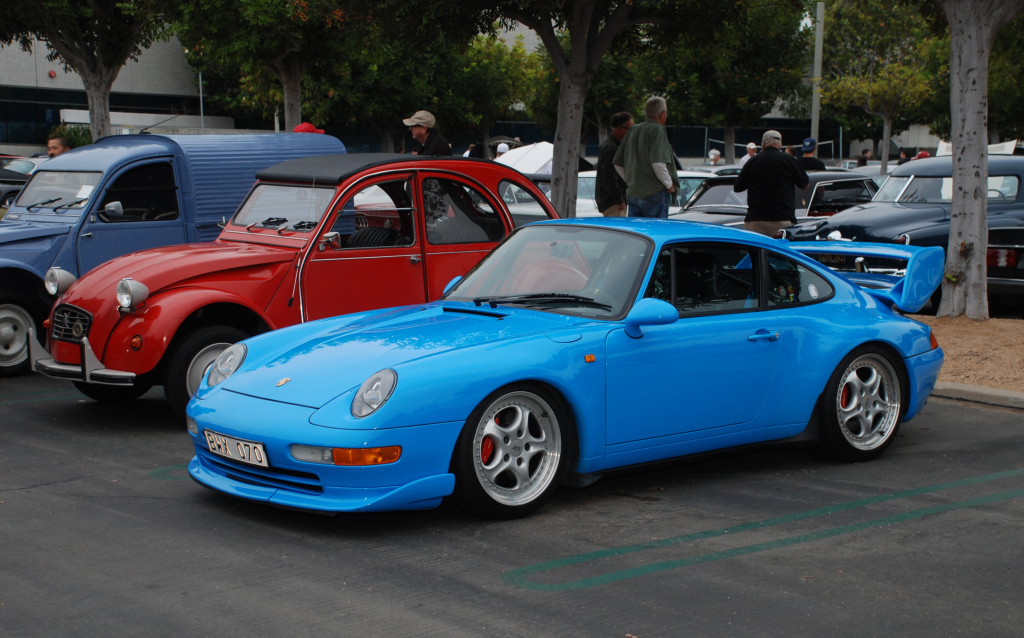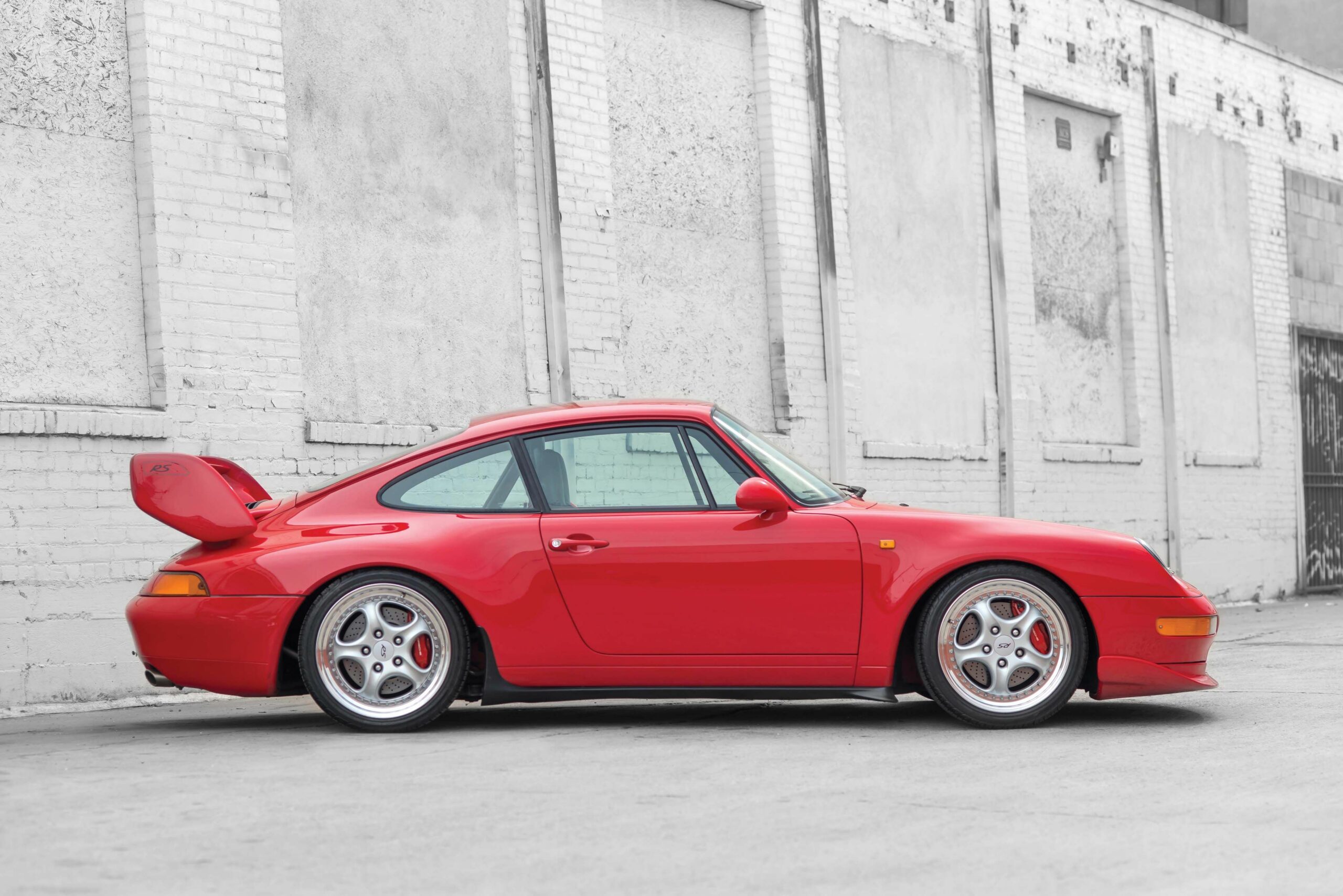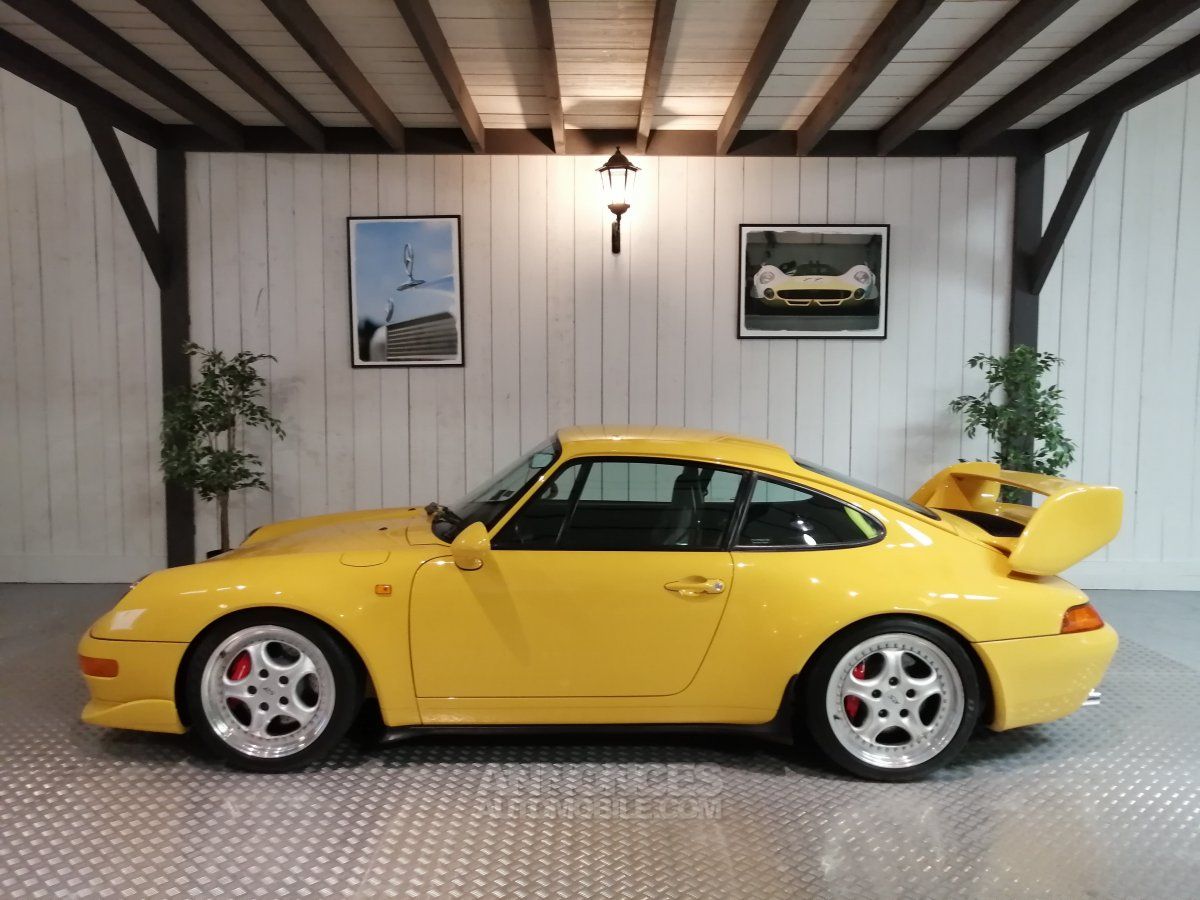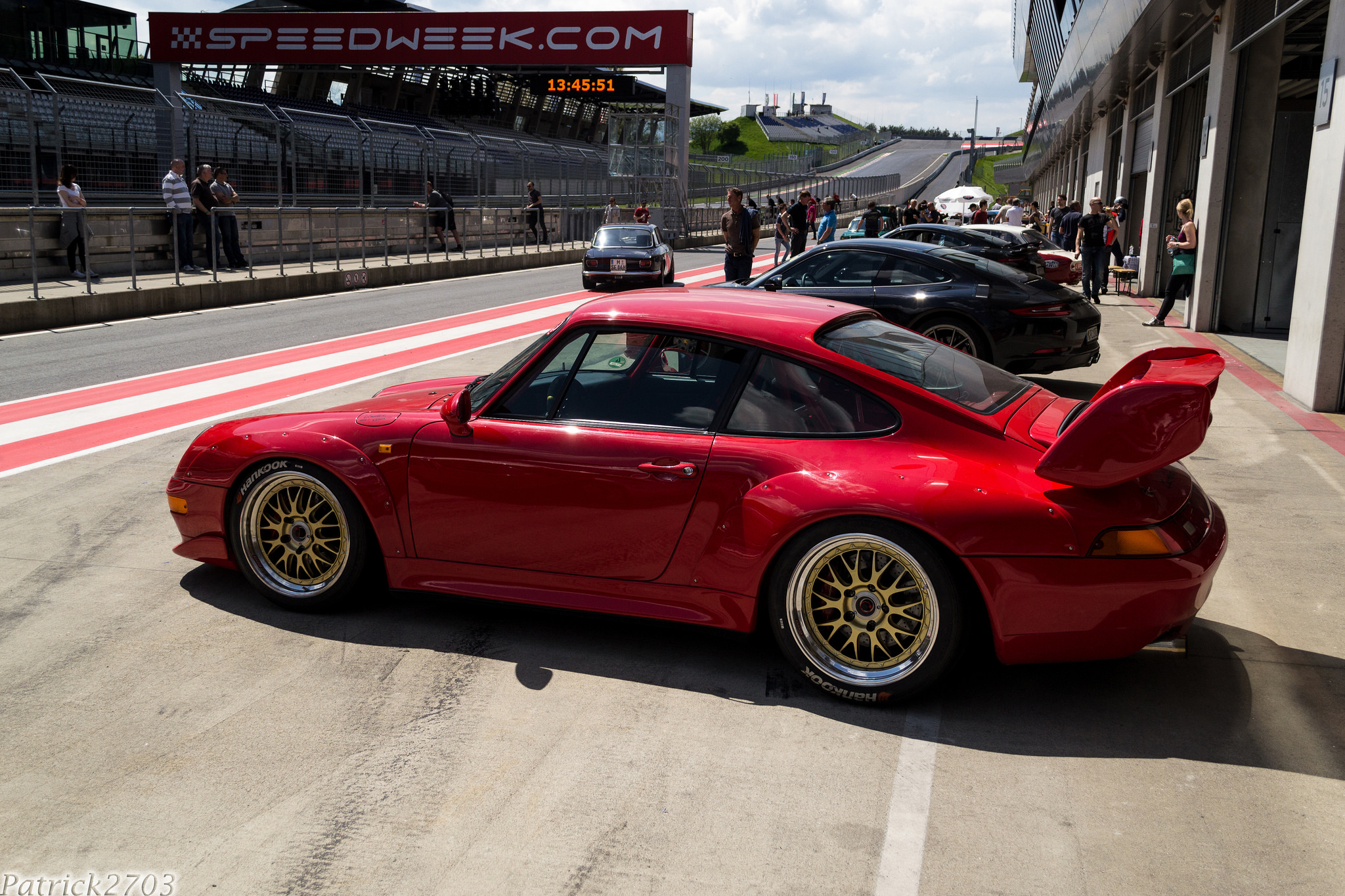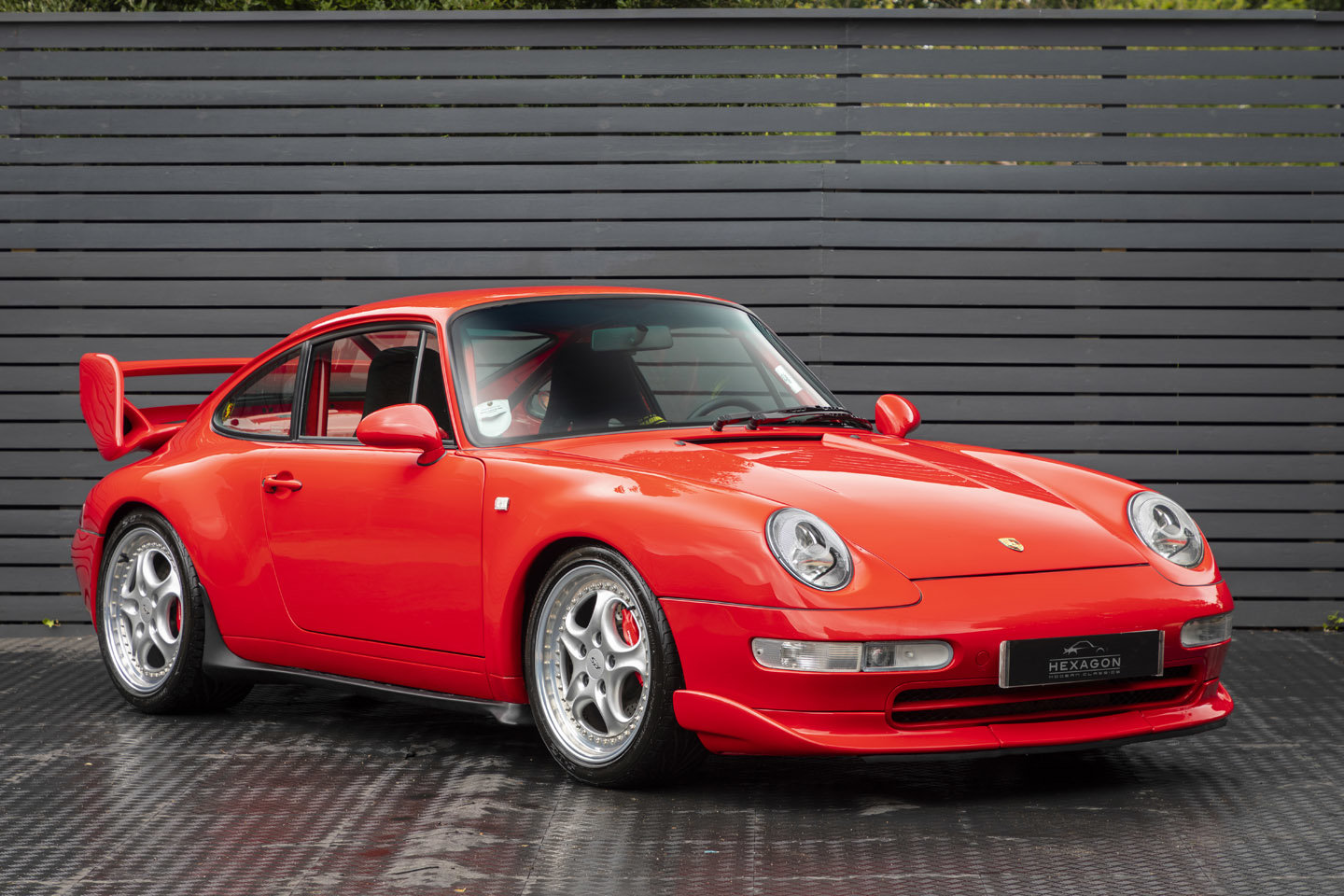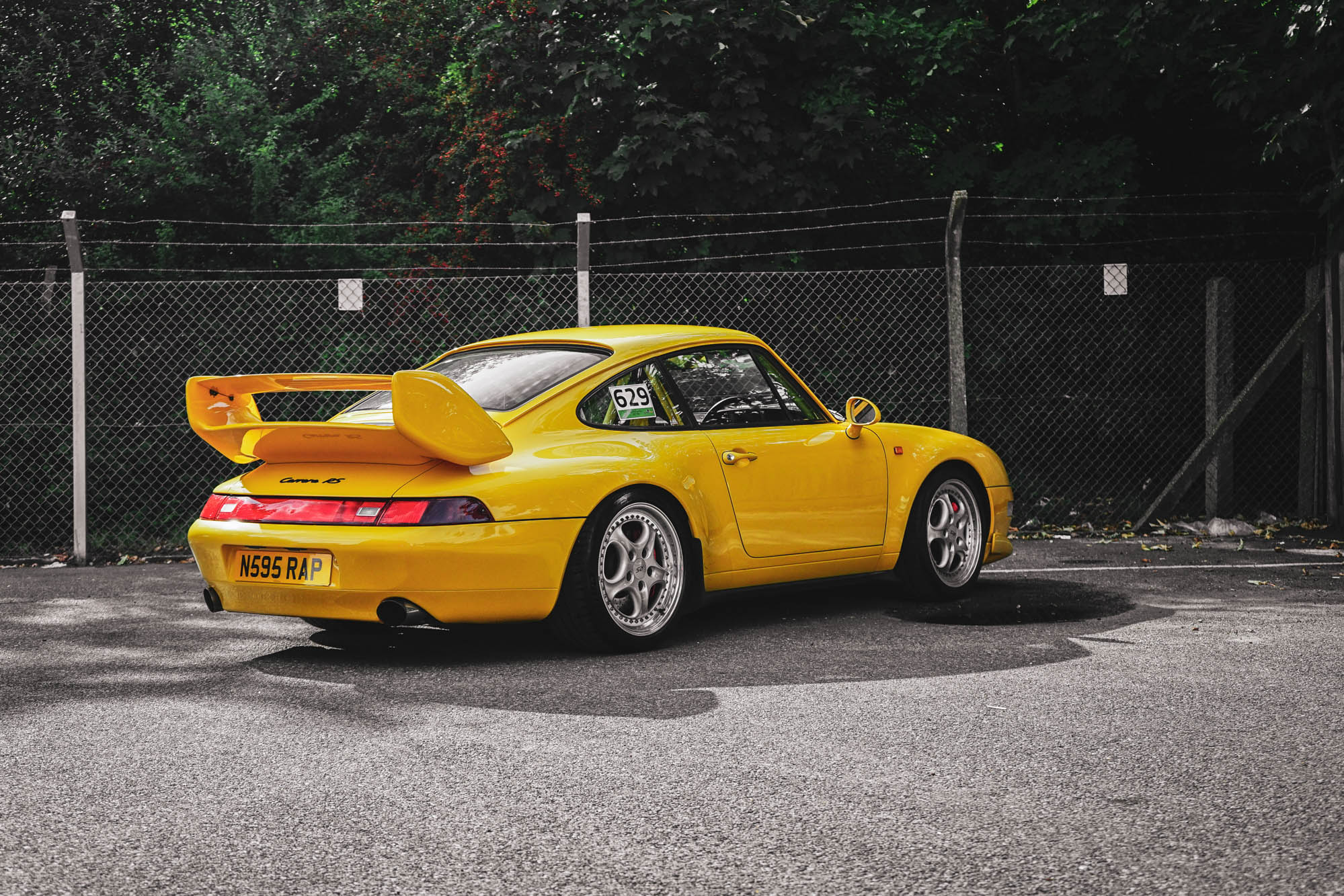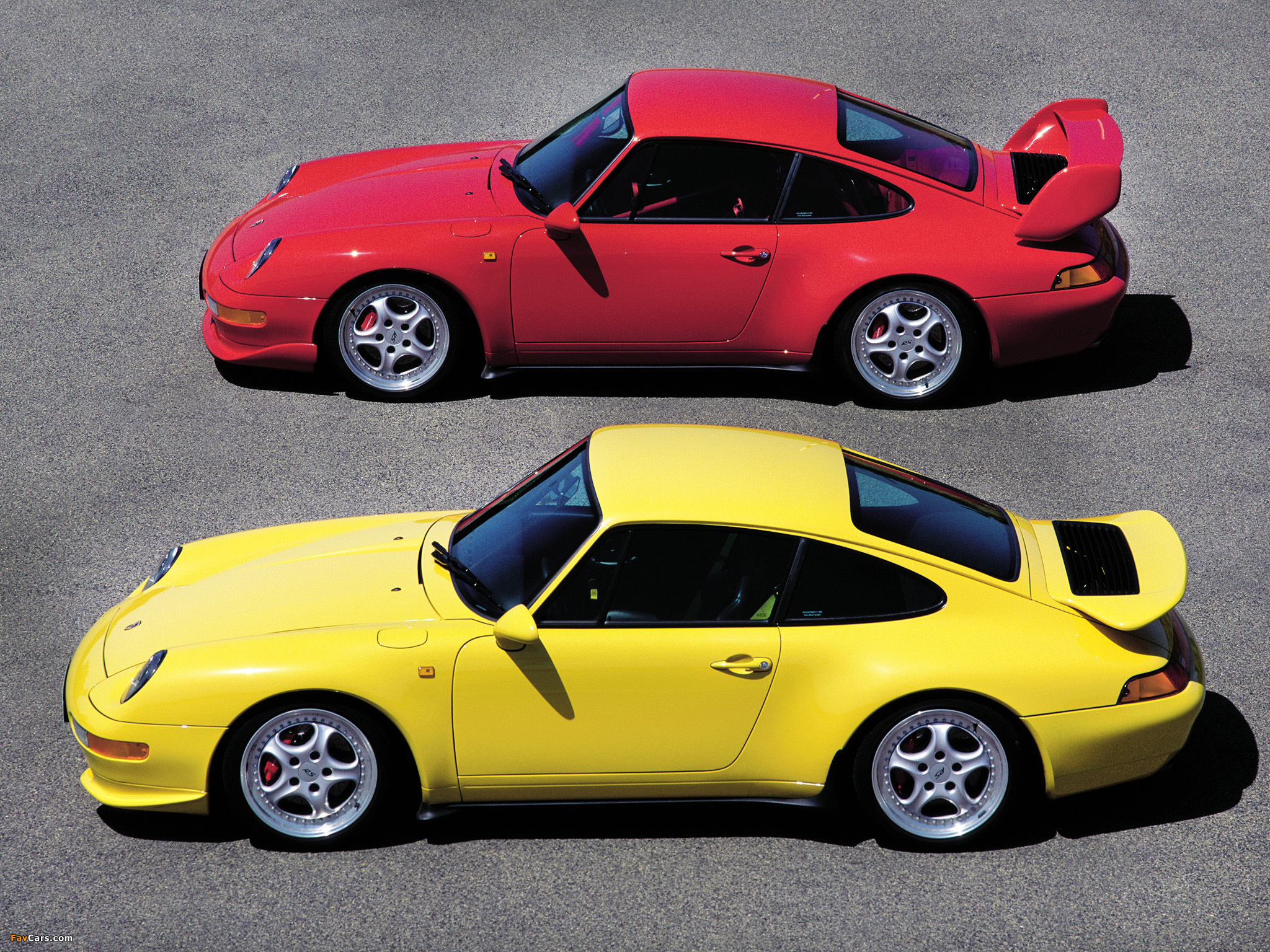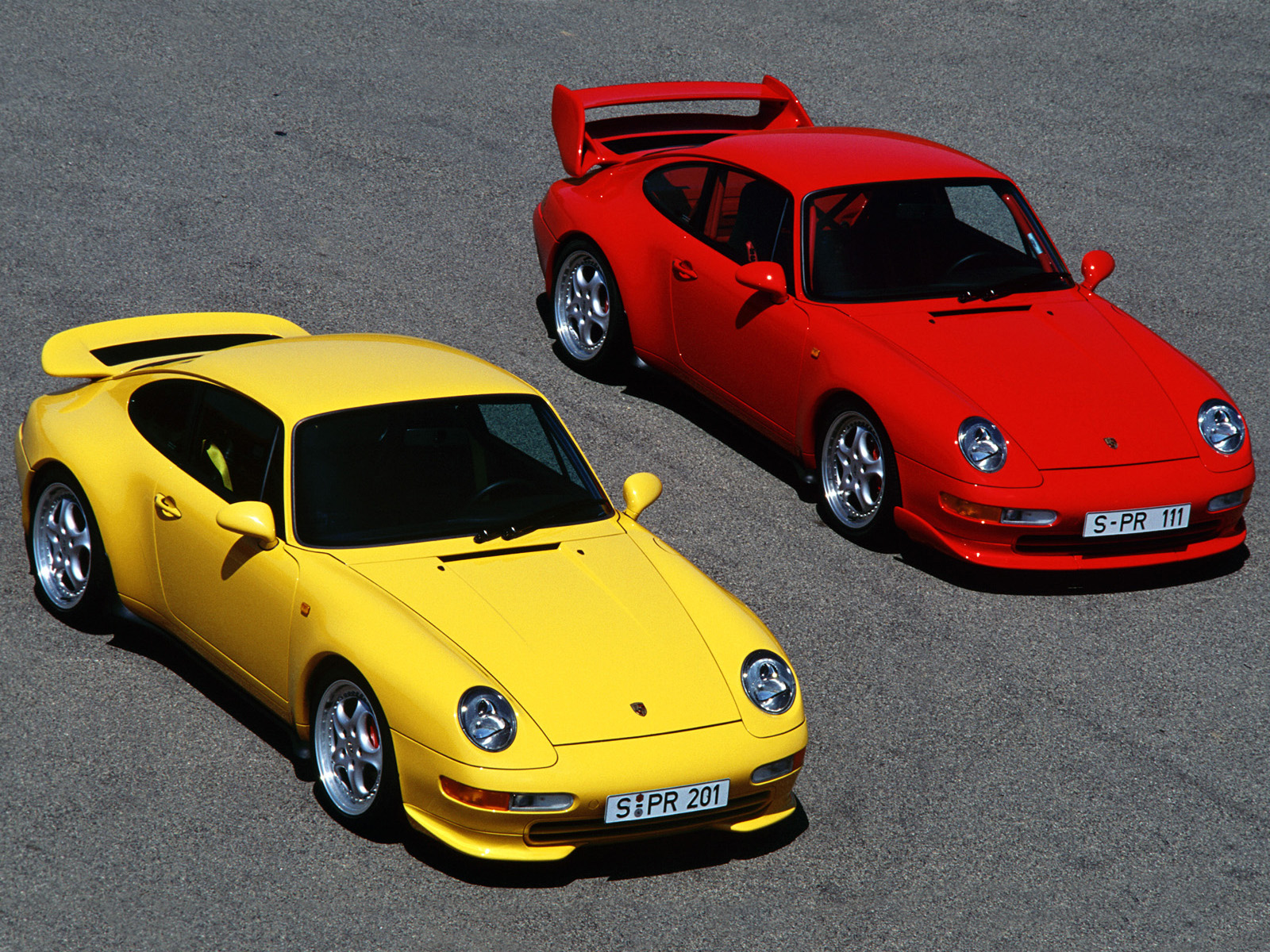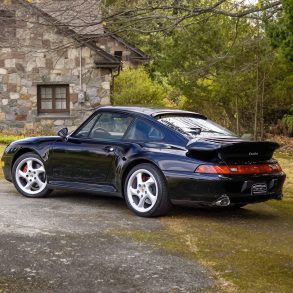(1995 – 1996) Porsche 911 Carrera RS 3.8 Clubsport (993) – Ultimate Guide
The RS takes the 993 to another level, and the Clubsport only serves to intensify that formula even higher again. It existed as a means to homologate the Carrera for the BPR GT3 and GT4 categories and is based on the Carrera Cup car, as well as giving more track-focused customers an even more focused machine.
Even More Track Focused
The Carrera RS Clubsport was a track-focused iteration of the Carrera RS with relatively limited road usability. The Clubsport added a fully welded roll cage which, combined with the RS’s seam-welded shell, increases the body’s stiffness by 40 per cent over the standard Carrera. That adjustable suspension strut brace was standard, the top mounts for the suspension being ball joints, the front suspension sitting 30mm lower at the front and 40mm at the rear. The RS also gained 23mm front and 19mm rear anti-roll bars.
Like the normal RS, there is thinner glass, no electrically cleared rear window, aluminium body panels and a host of other weight saving tricks beyond the regular RS. In standard trim the RS weighs in at 2820 lbs, the Clubsport even with the addition of that cage reduces that by around 110 lbs, down to 2,770 lbs. There is literally nothing inside other than the absolute bare necessities (three pedals, gear stick, steering wheel and rev counter. It feels pure race car on the inside (which of course it is).
On the outside, the RS Clubsport carries a larger rear wing and deeper chin spoiler then the “regular” Carrera RS. It keeps the RS’s aggressive looks and takes it even further. The bi-plane rear spoiler replaces the less overt whale tail wing on the standard RS. It features intakes integrated into the upward struts, the top element of the wing adjustable between 0-12 degrees, or replaceable with a significantly higher and wider banana-style RSR wing if you were really serious about track work.
The front aero on the Clubsport is more aggressive also, the splitter running the entire front of the car: it’s deeper, rolling up fore of the front wheels to help balance that greater rear wing downforce. Along the flanks the Clubsport wears the same black lower valance as the regular Carrera RS.
Just 227 993 Carrera RS Clubsport were ever built. The thing to look for is an under-hood sticker containing the essential 003 code. That signifies Group N GT1 Carrera RS, simply ‘Clubsport’ or, in some markets, ‘RSR’.
Every element of the suspension is adjustable for track set-up. There are stiffer track rod ends in the steering linkage, power steering being standard, improving turn-in response and feel. The wheels are 18-inch, three-piece split-rim “speedline” units. They are eight inches wide on the front axle and wear 225/35/ZR18 with the rear’s ten inches and 265/35/ZR18 tyres. Behind the wheels are the red 993 Turbo-derived, four-piston aluminium brake calipers with 322mm cross-drilled and ventilated discs all round.
3.8 liter M64/20 Engine
The engine, like the standard Carrera RS, is the 3.8 liter, M64/20 unit, which grew in capacity from 3,600cc to 3,746cc. The increase is achieved by a 2mm increase in the bore. The M64/20 also had lighter, forged pistons with lower height and relocated wrist pins were covered in a special coating called Grafal to help reduce noise and make it freer revving.
The RS was also the first Porsche’s with variable-length intake system. The output is rated at 300 hp at 6,000 rpm which was the same for both the RS and RS Clubsport.
All this drives through aG50/32 six—speed manual transmission with a vented clutch chamber, the ratios shorter for acceleration over standard Carreras, the RS coming with a Sachs limited-slip differential with 40 per cent locking on drive and 65 percent on deceleration. The 003 Clubsport specification further benefits from the addition of a single, rather than dual—mass flywheel.
Driving Perfection
The engine does its best work in the upper ranges when its is really being strung out but much like the RS, the Clubsport did surprise us with its wonderfully linear power delivery even from low revs. It makes fast progress too, especially with its shorter gearing set up. At 300hp it so exploitable and fun and you never feel like you are doing speeds that are dangerous (like you do in today’s cars). There is no clearer a demonstration that 300hp is more than enough power to enjoy then this car right here. We would take a 993 Carrera RS 3.8 over just about any other car on the planet. It is not a daily driver, but for those moments when you want to have a fun, intoxicating and engaging drive, it is an absolutely cracking car.
Buyers Guide
Only 227 993 RS 3.8 Clubsports were constructed. Today these 993 Carrera RS 3.8 Clubsports are some of the most prized collector cars on the planet and they are going for seven figures. When you consider that this is the last in a historic line of air-cooled RS models combined with just how magical it is to drive, it goes a long way to explaining why it’s so sought after today and why it is so expensive.
Specs & Performance
While the 3.8 Clubsport had the same power (300 bhp @ 6,500 rpm) and torque (262 ft lbs @ 5400 rpm) figures as the regular Carrera RS 3.8, it was a different animal on track. 0 – 60 mph, quarter mile and top speed all matched the regular variant, but the Clubsport was track-focused and has faster lap times. For full specs, see here.
Pictures


